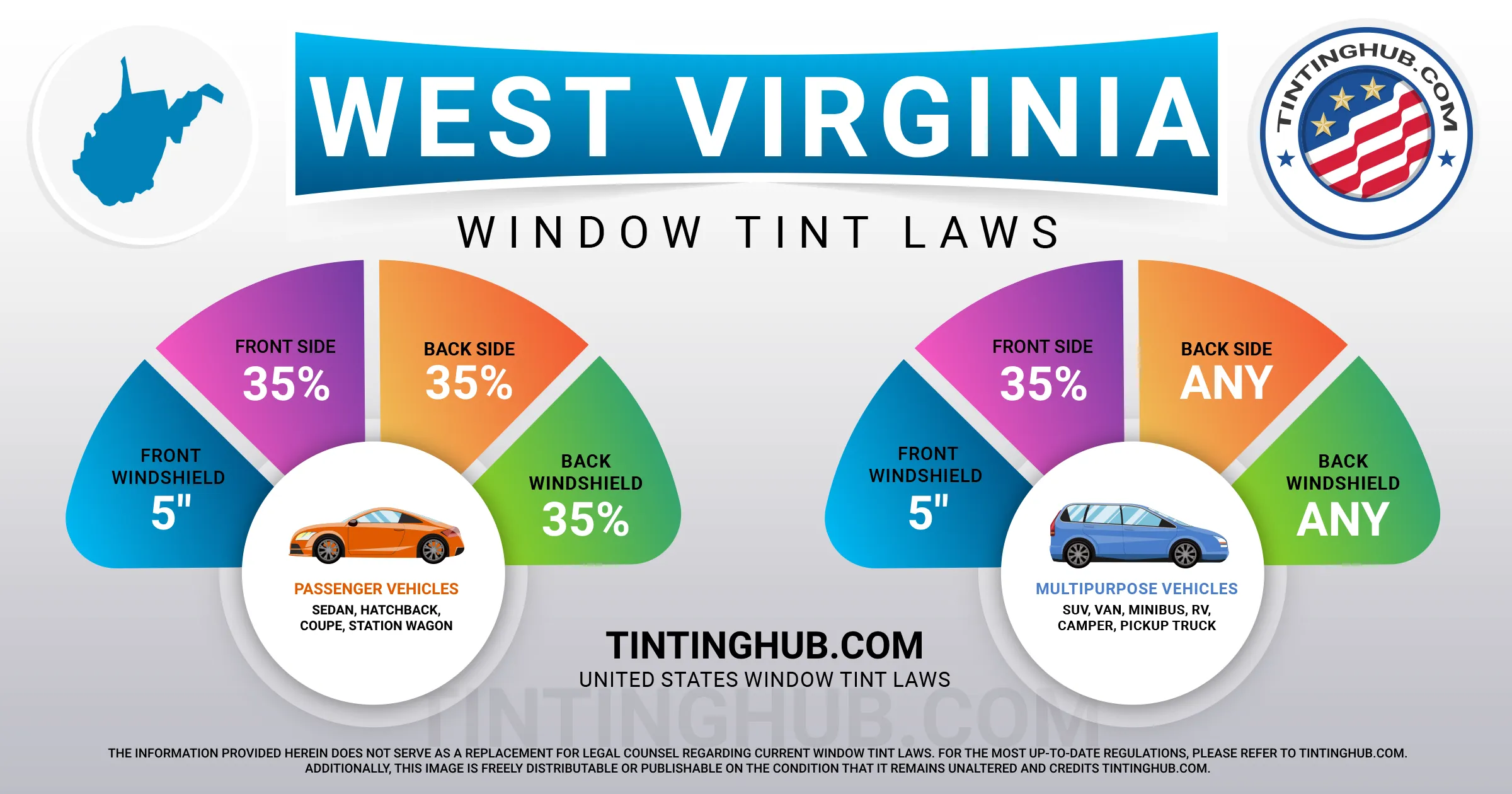West Virginia Window Tint Laws (Last Update 2024)

Demystifying West Virginia’s Window Tinting Regulations: Your Guide to Legal Tinting
When you’re cruising the scenic roads of West Virginia, it’s essential to be aware of the state’s regulations regarding car window tinting. These laws were established back in 1991, and they’re designed to ensure road safety while allowing some freedom for personalizing your vehicle’s windows.
In this comprehensive guide, we’ll walk you through West Virginia’s car window tinting laws, from permissible darkness levels to tint reflection percentages. Let’s dive into the specifics and keep you on the right side of the law.

Understanding Window Tint Darkness
VLT Percentages for Different Vehicle Types
The first aspect to consider is the Visible Light Transmission (VLT) percentage, which determines the amount of visible light allowed through your car windows. In West Virginia, these VLT regulations differ slightly for sedan cars and SUVs or vans.
Tint Darkness for Sedans
- Windshield: Non-reflective tint is permitted on the top 5 inches of the windshield.
- Front Side Windows: These windows must allow more than 35% of light to pass through.
- Back Side Windows: Similar to the front side windows, rear side windows must also allow more than 35% of light.
- Rear Window: The same 35% of light transmission applies to the rear window.
Tint Darkness for SUVs and Vans
- Windshield: Just like sedans, non-reflective tint can be used on the top 5 inches of the windshield.
- Front Side Windows: These windows must also allow more than 35% of light.
- Back Side Windows: For SUVs and vans, there are no specific restrictions regarding the darkness of back side windows.
- Rear Window: Similar to back side windows, any level of darkness is allowed for rear windows.
Examining Window Tint Reflection
Window tint serves a dual purpose, not only reducing glare but also heat. West Virginia law takes this into account and limits the extent of window tint reflection.
Tint Reflection for Sedans and SUVs/Vans
- Front Side Windows: The reflection on these windows must not exceed 20%.
- Back Side Windows: Similar to front side windows, rear side windows should also maintain a maximum 20% reflection.
Additional West Virginia Window Tint Rules and Regulations
Apart from darkness and reflection, West Virginia has other important laws, rules, and regulations concerning window tinting:
1. Side Mirrors: Dual side mirrors are a must if any window behind the driver is tinted.
2. Restricted Colors: Be cautious when choosing tint colors. Yellow, amber, and red window tints are not permitted.
3. Certificates: Manufacturers of window film need to certify the film they sell in West Virginia. Before having your windows tinted, ask your dealer if they are using certified film.
4. Stickers: Every tinted car window should have a sticker placed between the film and the glass to identify legal tinting.
5. Medical Exceptions: West Virginia acknowledges medical exemptions for special tints. If you have a valid medical reason for a darker tint, ensure you have the necessary documentation.
6. Penalties: Violating tinting regulations can result in a misdemeanor with a maximum fine of $200.
While these regulations aim for uniformity across the state, it’s essential to note that local interpretations and enforcement may vary. We recommend that you double-check these rules with your local Department of Motor Vehicles (DMV) or law enforcement authorities to ensure compliance.
We last updated our information on West Virginia’s window tint laws in 2023. However, if you ever come across any inaccuracies or outdated information in our content, please don’t hesitate to reach out to us. Ensuring your safety and peace of mind on the road is our highest priority.
As the trusted industry leader providing accurate window tint laws, we remain dedicated to keeping you well-informed and assisting you in navigating the roads safely and within the bounds of the law.